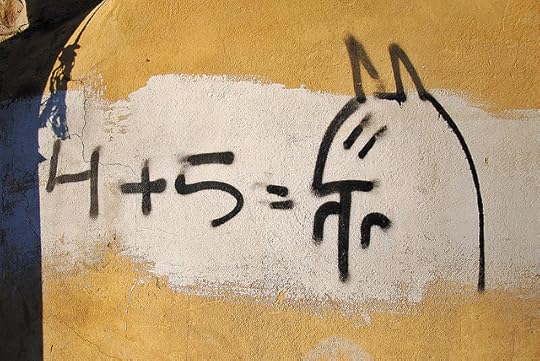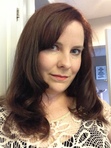Kate Larking's Blog: Anxiety Ink, page 44
November 12, 2015
Setting as Character: What I Took Away from Faith Hunter and David B. Coe

I’m mixing it up today by talking about the panel I attended presented by Faith Hunter and David B. Coe called On Writing. The floor opened up to whatever writerly banter the two could come up with –you’ve got to love when banter between two great writers is so educational. The main idea I took away from their 50 minute conversation focused on setting, specifically, treating your setting as a character.
The following is a direct riff and interpretation of the ideas of setting Hunter and Coe brought up. The main ideas are theirs with my minor additions and extrapolations. Any incoherencies are my own.
I’ve heard “treat your setting as a character” time and again, which is why I spend so much time researching my settings. I’ve had inspiration too, when setting is done so well and charismatically that I grapple to figure out how writers pulled it off, like in The Republic of Nothing by Lesley Choice, Shakespeare’s The Tempest, Wuthering Heights by Emily Bronte, and Skinwalker by Faith Hunter, to name a few.
Anyway, there were three main points brought up about setting that I want to share and discuss. The ideas are somewhat like Russian nesting dolls, the first, the biggest that houses the others, involves setting, tone, and genre. This feeds into putting your character at odds with their setting, which ties directly to what does the setting mean to your character? Ultimately, this compact (and mini) matryoshka doll set is what makes the setting of any story relevant.

Inner Circle by James Lee via Flickr
First and foremost, setting can, and does, set the tone for your story. For instance, urban and rural settings are going to have different impacts on the characters and what they can do. Plus, some cities are characters on their own from the get-go because of the place they hold in popular imagination, like New Orleans, New York, Paris, London, and Moscow. I wouldn’t say that you couldn’t create your own city and turn it into a character, I’ve seen it done, it just has to be more actively done than with a real city that has a complex, characterizing past that doesn’t need to be spelled out.
Regardless of a city’s legacy or lack there of, in order to turn your setting into a character all aspects of it must be utilized. Sights, sounds, and smells are the big three. But just as important are the intimate little details. What words would you use to describe your grandmother’s house versus a strangers? There would be far more finer details you’d be able to share about the place you’ve frequented and explored versus the place you’re unfamiliar with.
Writing what you know is a boon in this regard, but I truly believe strong research can help you give a good blow to that phrase.
The tone and pace of your story is inherently tied to the genre you’re writing. I think we can all agree that there’s a difference in how a romance and a horror story are written and presented? The genre usually dictates the tone your story needs to work with, and of course you need to have a setting that compliments both aspects.
An example Hunter and Coe gave is this: urban, darker genres need a setting with a level of menace. Humans aren’t a nocturnal species, they are not naturally comfortable in the dark –hence why all the bad creatures are dealt with at night in a lot of (almost all) urban fantasy series. Menace is created when humans are out of their element.
This leads into the next idea about setting: put your character at odds with their surroundings. Not only does doing this deliver much needed tension, but as a writer it lets you impart more about the setting to readers, it lets you add depth and show character strength and weakness.
Writing 101 says throw your character out of their comfort zone. Putting them at odds with their setting is an easy way to do this. Plus, it lets you get creative about their weaknesses and comfort zones and fears.
This then leads to idea number three: what does the setting mean to your character? Yes, it’s a great idea to put your protagonist at odds with their surroundings, but there has to be a legitimate reason for them to stay in those surroundings, especially if they’re out of their element.
Ergo, the setting actually has to mean something to the character. How they feel about it will in turn dictate how it’s fed through to the reader and will affect the nuances the main character picks up on and filters. People are nothing if they’re not perceiving. Your character can’t merely exist in dead space. And setting and description are made relevant via your main character.
Ultimately, it’s important that you’re deliberate in your narrative decisions. You can set a story in a city you love but you have to make the city relevant not only to your story but to your character. Believe me, I know how challenging this idea is. I’m currently scrambling to figure out why my main character has set roots down where my story is set because her background is not easily leading my to the city I chose. However, her and the story won’t leave. She’s there for a reason, I just have to figure out why.
After walking away from this panel and looking deep at the ideas presented, I want to strive to focus on setting as a character. It really should be treated as such because your story shouldn’t be able to move locales without your story being altered. Setting must be as significant as protagonists, antagonists, supporting casts, and the plot. If nothing else, that’s what I really took away from this talk.

The post Setting as Character: What I Took Away from Faith Hunter and David B. Coe appeared first on Anxiety Ink.
November 11, 2015
Changing Publishing Landscape

One of the aspects of writing I think a lot on in publishing. After all, I now work on the book selling end of the industry. While before I was fixated on what it meant to be a writer, how publishing worked for the writer, how self-publishing worked for the writer, how marketing worked for the writer–and so on–I’ve now shifted my focus to the industry as a whole.
At When Words Collide in August 2015, I took a workshop with Faith Hunter about Bait and Hook. I already talked about the workshop here, but something came up when I was there they I haven’t been able to get off my mind.
During a tangental question-and-answer period, the issue of the changing publishing landscape came up. Faith mentioned how she saw things going: hardback for top a-list authors at publishing houses, tradepaper on demand for a-list and upper mid-list, and the digitization of midlist–or the elimination of mid-list all together.
When I order books from publishers, usually working with sales reps, a lot of the time this statement comes up, “It’s nice, but not in hardcover.” Or “Wait until the paperback.” This happens a lot with debut authors who are coming out in hardcover first, or short story collections. If the publisher decision was to have it come out in hardcover and they weren’t going to give it a firm marketing push, the understanding on the bookselling side is that unless you have a real good reason to carry it now, wait for the paperback version. Let other stores take the risk and feel out whether this author is going to be doing marketing on their own or not.
Do I think high print runs are going to be a relic of the past? Yes, I think so. Print runs are shrinking because warehouses cost moolah. Digitization and print-on-demand of the midlist (including debut authors) is going to really change the industry and make it harder and harder to break out.

Bookstores are important. People still love paper books. People always will. Technology and data are far to fleeting. Paper stays, can be shared, can be handed down, can be gifted, can be resold. But if the traditional publishing industry is going to adopt some of what the self-publishing side of the industry is doing–print-on-demand, digital-only version–its going to be even harder for beginning authors–even midlist authors–to start or continue their careers with appearing in bookstores.
As I mentioned, it was an off-topic subject that has stayed on my mind for some time as I work through what books to order into my store for spring and summer 2016.
Where do you think the industry is going?

The post Changing Publishing Landscape appeared first on Anxiety Ink.
November 9, 2015
World Fantasy Recap

After a whirlwind weekend, I am home.
A day ahead of schedule, too. This is extra great, because I can’t afford to lose another day of writing. I’ve had too many non-writing days this month, as it is, and I have yet to actually spend two hours writing any day this month.
I would say, “So much for NaNo,” but I still have vacation time. No day job for me until Thursday! Time to make up some lost ground.
No discussion of the World Fantasy Convention in Saratoga Springs is complete without acknowledging the elephants in the room: the lost registrations, the joke of a harassment policy, and the inexcusable accessibility issue. (If a panelist needs a ramp to be part of a panel, GET A DAMN RAMP. It’s not that hard.) Among other problems.
My experience was fairly uncomplicated. I brought my sister this year, and we both somehow survived.
I attended two and a half panels, which were good, and several readings, which were all excellent. The readings are my favorite part of World Fantasy programming.
But really it’s about the people. Awesome friends I only ever see at the con, and fantastic new friends. My inner social butterfly emerges and has a blast. This year did not disappoint.
Next year, World Fantasy is out for me. Instead, I hope to try a new convention. We’ll see.
2017, though, will be in Texas. San Antonio. I’ve never been to Texas, but I’d like to. (And maybe the promise of the Alamo will sway my husband into coming along.) However, I don’t plan on buying a membership.

The post World Fantasy Recap appeared first on Anxiety Ink.
November 5, 2015
NaNoWriMo 2015

Last month while catching up with my January goals I said this about my plan to participate in National Novel Writing Month 2015:
I’m putting a lot of eggs in this basket. Not only am I doing intense prep work to clear November so that I can focus on NaNo, I intend to get the bulk of my WIP written during this time, and use the momentum to spur me into getting into the habit of writing whenever I can. No pressure.
The month leading up to November has been hectic. Throughout August and September I was more often than not under the weather thanks to my allergies, sensitive sinuses, stress, and the extended warmth that has allowed harvest season to never end. Add in poor sleep and I was a mess.
However, I kept my NaNo goal first and foremost on my agenda. I blogged months in advance so that I lost no writing time during the month (4 weekend days and 8 972 words later). I booked a week off work, devoting my last bit of vacation time to it. I allocated more writing space in my room to my WIP so that I’m spurred to think about it more. I’ve warned friends that I will be largely unavailable during the month.
I’m ready to bunker down and do some serious writing.
I’m working hard to set myself up for success. I might be trying too hard to make NaNo pivotal in my writing life right now, but I need something, and I’ve grasped onto it like a drowning woman. My prep work will continue until Oct 31st, by then I hope to have re-familiarized myself with and revamped my plot, re-familiarized myself with my monsters and setting, and learned more about the little things in my character’s life that are largely alien to me –like weapons.
The eggs are in the NaNoWriMo 2015 basket: the word count goal is set, the word count calendar has been created, the ultimate deadline is set, and the time has been carved out. I’m ready to kill it.
See you at the end of November! Please bring coffee.

The post NaNoWriMo 2015 appeared first on Anxiety Ink.
November 4, 2015
NaNoWriMo Mathematics

I’ve had my triumphs and issues with NaNoWriMo in the last few years. But as I have mentioned before, I have never completed NaNoWriMo, the traditional, November version.
And that’s okay. Because, in terms of NaNoWriMo mathematics, I still came out ahead.

While at Sirens Conference this year, something very important stood out in Yoon Ha Lee’s keynote. It’s something I want to remind myself of again and again as I do NaNoWriMo this November. So I wanted to share it.
Every day, you just have to beat zero words.
That’s it. That is all there is to NaNoWriMo mathematics.
As long as you beat zero, your effort will add up. Even if it’s one word. 1 + 1 + 1 …still adds up to more than zero.
0 + 0 + 0 + 0… will never add up to anything more.
So get out of your head and get the words on the page. You can figure out the good and the bad later, the keepers and the scrapped later.
Just beat zero.

The post NaNoWriMo Mathematics appeared first on Anxiety Ink.
November 2, 2015
Write the Fun Bits. Or Don’t.

We’ve probably all seen this advice in one form or another: write the fun bits. If it’s boring, skip it.
This is dangerous advice because it gives the impression that writing should always be fun. Clue: it’s not.
What this advice means is that if you’re bored, the reader will be bored. But a story needs breaths. It needs lulls and calms to make the ramping tension and climbing stakes that much more real, that much more vital.
Where this advice is the most useful – for me, at any rate – is in the rough draft.
I recently realized I was stuck. Not because I couldn’t write, but because even when I did, my characters weren’t going anywhere. They were just talking, and it felt like they were repeating themselves. (They probably were. This is why revision matters.)
They were in one of those lulls that follows a period of tension. A perfect spot for developing backstory and subplot.
Except in order to write that, I would have needed to develop backstory for the sake of filling the space. And I don’t have a subplot for this setting. (Yet. This is still the rough draft, after all.)
So I made the note, “Backstory/subplot development can go here,” then sat down to figure what’s the next movement, the next action that can happen.
The main character was avoiding . . . many things. So I made those things happen. And when I followed that progression, everything lined up like dominoes. Which means I’m doing something right.
My process is messy. Often inarticulate. But this is what “write the fun bits” means.
At least to me.

The post Write the Fun Bits. Or Don’t. appeared first on Anxiety Ink.
October 29, 2015
The Lasagna Method of Writing


Mmm… lasagna by jefferyw via Flickr
Nope, I’m not done talking about the Faith Hunter Bait and Hook workshop I attended in August! I just took so much amazing stuff away from it that I can’t help but share the choice morsels. Today’s topic is the Lasagna Method, easily the most popular concept shared at When Words Collide this year after Hunter laid it out for us on Thursday.
To put it in context for you, the Lasagna Method concerns backstory. Whether it’s information about your character’s history or your world, less is always more, but you still have to fill in the gaps for your reader. Leaving them floundering in the dark is not an option, neither is boring them with endless info dumping. That’s where the Lasagna Method comes in.
To quote Hunter nearly verbatim: “Flashbacks, backstory, and history should take place from the character’s point of view in the last two-thirds of the book unless peppered in small pieces throughout the narrative. Why? Because these things don’t hook, bait, or help with conflict when they’re presented in big chunks.”
It’s like this:
Your protagonist’s history is the onion in the recipe;
Your world’s unique history is the tomato sauce;
Your supporting characters’ stories are the noodles;
Your protagonist’s significant flashbacks are the cheese;
And so on and so forth.
In the glass baking dish that is your story’s confines, you’re not going to just dump these different ingredients in big piles. That will lead to one nasty mess. The key to making a great lasagna is layering all the different ingredients in harmony and balance. The key to great story telling is layering all the different threads in harmony and balance.
It’s such a simple analogy that its mind blowing. I intend to do my utmost to follow the Lasagna Method when I write, I really should say when I edit, because it is such a great lesson.
What do you think?

The post The Lasagna Method of Writing appeared first on Anxiety Ink.
October 28, 2015
The Dark Side of Writing

On Monday, Melissa posted about coming back from the dark side of writing and I had a long enough comment on the dark side of writing and characters to turn it into a post.
Writing deeply flawed, tortured, or ill characters can be immensely challenging. When I started writing, I was ill. There is no way around that fact. When I started writing, I was immensely depressed. As such, in some particularly challenging times, my writing took on a quality that was visceral, a fist-clenching-the-heart type of pain that hit me when rereading it. I took a lot of my raw feelings, pain, and loneliness and put it onto the page.
Writing it wasn’t the challenge. Writing it, I was so depressed that it felt like crap anyway. It was all a series of simple words that couldn’t possibly add up to much, I thought. But if I was feeling healthier, when I looked back at those words, they had the power to drag me right underwater again and drown me. The physical sensations of depression would trigger anew reading about this quasi-fictionalized pain that I had bestowed upon the character.

And I realized that I had to learn to soften the blows on my characters. Because if I put all my pain into one character, the narrative would be too heavy. I had to learn that I needed to give slivers of that pain to each character to avoid overwhelming them, their scenes, and their stories with my experiences. Just as I have to split up the rest of my learnings and experiences among characters, I have to split the pain to make it bearable.
If I do have to write more darkly for a specific character, I try to layer in what I need the character to feel. Rather than dive deeply into the character’s psyche, which can be dangerous for my own mental health, I layer the scene with edits to achieve that I need. I censor my approach so that I don’t drown in it all at once. I absolutely agree with Melissa in that telling friends and family that you might need some support from them is a good idea.
Do you find some things easy to write but emotionally challenging to read later?

The post The Dark Side of Writing appeared first on Anxiety Ink.
October 26, 2015
Coming Back From The Dark Side

How do you come back from the truly dark stuff?
This question has appeared a few times lately. One writer friend outright asked me how I handle returning to “normal” with the dark stuff. Someone else confessed to a NaNo support group his fear of writing a particularly tortured and messed up character.
One way to deal with it is to set up a routine to cue yourself to switch modes. It can be something small, like wearing a particular sweater during writing sessions or making a specific kind of tea after a session. Anything to trigger that Pavlovian response.
It’s also an excellent idea to give close friends and family a little warning that you may need some extra love and support to keep you grounded and in your own headspace while you’re working on a difficult story.
My husband is hugely supportive and understanding and is instrumental in keeping me healthy and function.
This was a strange question to me, at first. I’d never thought much about it; it was just something I did, and I didn’t necessarily notice the darker elements of my stories affecting me in any particular way.
I imagine that having a touch of sociopath would help.
I’d love to hear other ideas and ways of keeping healthy when our stories turn to the dark side!

The post Coming Back From The Dark Side appeared first on Anxiety Ink.
October 22, 2015
Notes on Talking and Writing Diversity from a Newbie

I know privilege conversations can be difficult, and I know that to say I’m not trying to be political by bringing up privilege would be a lie. However, I am able to look at my privilege and that of others objectively. I can check mine at the door, which is what I’ve done to write this post. If you’re unable to do so, I am recommending you stop reading here. You may see parallels between my existence and yours and dislike my comments about “our” privilege and how it has forwarded “us” better means to navigate the world.
There’s no “us” here I’m up for debating. I’m talking about me. Fair warning.
I am very lucky from a privilege perspective. I have led a far from “easy” life, I’ve faced hurdles I couldn’t imagine overcoming again in my lifetime, but I still recognize that I have had a lot going for me (even when it felt/feels otherwise). The fact that I’m Caucasian, straight, cisgender, abled, and near-ish the middle class with my current living situation has made many of the obstacles I’ve faced a lot easier to overcome. It also makes my life a lot easier to live because the major social adversity I face is sexism. Not to say sexism isn’t an enormous burden in our time.
I’m far from perfect, and I can’t say that my privilege hasn’t blinded me naïvely. Especially when it comes to the media I have consumed all my life. All media is produced with stories that reflect aspects of my reality. I can open almost any book, turn on nearly any TV show, pop in the most popular movies, even click play on my iPod, and learn all about people who look exactly like me. For years, I had no idea –not one wit– that this was not the reality for everyone on the planet. I thought I was only gravitating to my likeness.
Unfortunately, ignorance is not a valid excuse. Ignorance equates to compliance. Thankfully, I am far smarter and more aware of our current status quo. And I can hardly believe it.
I grew up surrounded by diversity –in a small Calgary enclave located in the heart of conservative Alberta. That was and is reality, no matter how often the media likes to whitewash it. And I hate that I didn’t notice. Or rather, I hate that I went along with the reflecting from a white centre.
Like I said above, this is a loaded topic, one that I could go on at length about for thousands of words. I’m trying to keep it short and focused, so I want to share three quotes that coalesce into something that strikes me as a writer:
“Diverse characters do not need to be non-threatening and palatable to ALL readers –‘dangerous’ things must be non-threatening to be accepted?” –The Diversity is Real panel at WWC
“The Strong Female Character is NOT the everywoman. The everywoman arises when you only have one woman on your team, which relegates that woman to the role of being every kind of woman. It is completely unrealistic for a woman to be altogether smart/dumb, sexy/virginal, vulnerable/independent, damsel in distress/butt kicker –all the gendered binaries we place on women.” –The Strong Female Character panel at WWC and this post I wrote previously about Annihilating the Everywoman
“Most black movies, for better or worse, carry a burden of expectation, having to be everything to everyone because we have so little to choose from.” –“The Last Day of a Young Black Man.” Bad Feminist. Roxane Gay. 3. ebook.
What ties these three comments together for me is this: they all deal with issues of expectation. Each brings up the idea of forcing characters certain people would find unpleasant into stereotypical molds in order to make them identifiable, understandable, and palatable to these certain people.
The rest of us as members of the audience should be disturbed and angered that these certain people get to dictate so much to us. Furthermore, the act of moulding diverse characters– of erasing them –is beyond damaging for the very real people they reflect.
I cannot speak more honestly from any perspective than my own, which is why two of my quotes reflect the perception of women in media, a topic dear to me. But this is a matter of basic logic at its core. For instance, I know that I, and my female/straight/white/cis friends are not cookie cutter images of one another or even the others that conform to those labels. And those are just my friends who fall into those specific categories!
I’m pretty sure the world at large knows that too, so I don’t really understand why a belief even persists that stereotyping is applicable to any group with similarities on the surface. I suppose that’s the big problem, we’re stuck on the surface.
I’m new to discussing and writing about diversity, but at least I’m trying to do it correctly. I can’t say I’m always successful at it, but I’m damn diligent about my research and would never intentionally promote stigmatizing images. I’ve always written about more than people who look like me or live like me, and I work extremely hard to do so authentically.
I probably have and will make mistakes. I can confront it, be confronted, learn from it, and I’ll try again. I think that’s part of what acknowledging your privilege is all about.
If diversity is a topic you find yourself interested in and need a place to start, I highly recommend these articles that Anxiety Ink has shared online:
This is what it’s like when diversity is faked.
What it’s like forcing “exotic” writers into the role of cultural ambassador.
What it’s like for kids who have no role model who looks like them.
Same topic as the previous, a little more blunt and mature.
The painful experience of one writer who faces yellow face desire all the time.
As far as diverse books go, non-fiction and fiction I’ve recently fallen in love with include:
Bad Feminist, Roxane Gay
The Farsala Trilogy, Hilari Bell
Minion, L.A. Banks
Marked Series, S.J. Day
Three Day Road, Joseph Boyden
My list is woefully lacking at this time.
Other excellent resources I adore include:
Bitch Magazine
herizons Magazine
Therepresentationproject.org

The post Notes on Talking and Writing Diversity from a Newbie appeared first on Anxiety Ink.
Anxiety Ink
- Kate Larking's profile
- 53 followers



